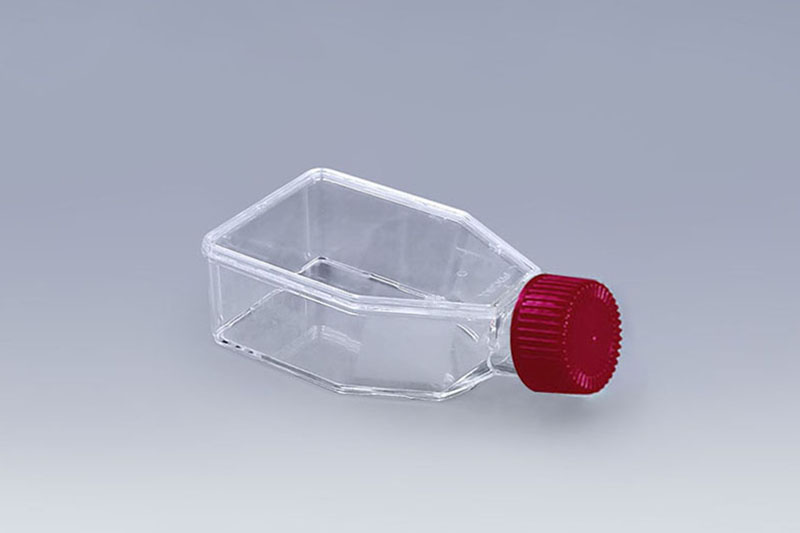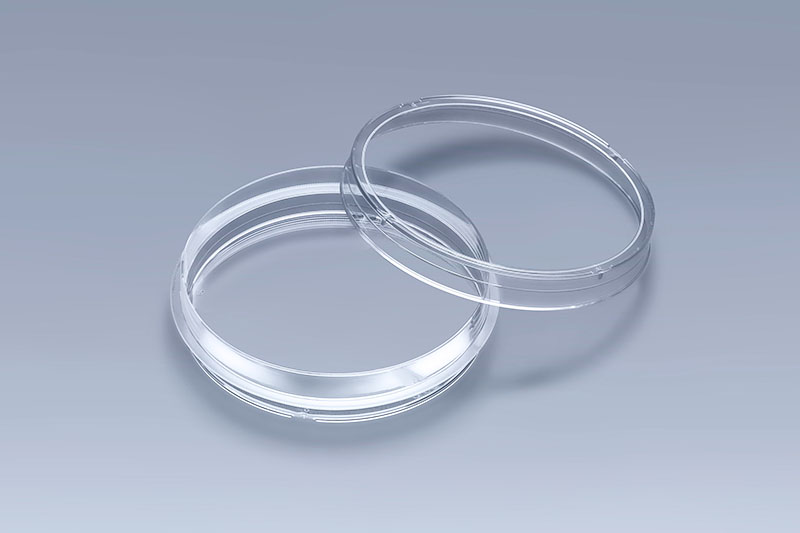Cell culture is a very important experimental technology, and has become an indispensable research method in the fields of biopharmaceuticals, life sciences, and clinical transplantation. Cell culture must rely on cell consumables to achieve the conditions required for cell growth. Cell culture flasks and cell culture dishes are two common types. So what is the difference between these two consumables?
Cell culture flasks are suitable for long-term culture, subculture, and as seed cells. The bottle mouth is small and the cells are not easy to be polluted. Cell culture dishes are suitable for use in various experiments and temporary culture. The difference between the two lies in the level of safety factor and the number of cultured cells.
It is better to use cell culture dishes for experiments with cells as carriers or objects, because the amount used is relatively small, saving cells, and petri dishes are more convenient for control experiments, but the cell culture dishes have larger openings and are relatively easier to contaminate, so more care must be taken during operation.
Cell culture flasks are used for primary culture of tissue blocks or easily contaminated cells. After the grown cells are subcultured, it can be determined according to personal preference. The area of the cell culture flask is large, so it can be used when a large number of cells need to be expanded.
Both cell culture flasks and cell culture dishes are containers used for microorganism or cell culture in the laboratory. The specific choice of consumables depends on the specific needs of the experiment, and the cell culture method should also be considered, whether it is suspension culture or adherent culture. Appropriate consumables are the basis for successful experiments.
The FAI climbed 5.9 percent year-on-year in the first 11 months of 2018, quickening from the 5.7-percent growth in Jan-Oct, the National Bureau of Statistics (NBS) said Friday in an online statement.
The key indicator of investment, dubbed a major growth driver, hit the bottom in August and has since started to rebound steadily.
In the face of emerging economic challenges home and abroad, China has stepped up efforts to stabilize investment, in particular rolling out measures to motivate private investors and channel funds into infrastructure.
Friday's data showed private investment, accounting for more than 60 percent of the total FAI, expanded by a brisk 8.7 percent.
NBS spokesperson Mao Shengyong said funds into weak economic links registered rapid increases as investment in environmental protection and agriculture jumped 42 percent and 12.5 percent respectively, much faster than the average.
In breakdown, investment in high-tech and equipment manufacturing remained vigorous with 16.1-percent and 11.6-percent increases respectively in the first 11 months. Infrastructure investment gained 3.7 percent, staying flat. Investment in property development rose 9.7 percent, also unchanged.
 English
English



















































 T25 Flask
T25 Flask 100mm Cell Culture Dishes
100mm Cell Culture Dishes